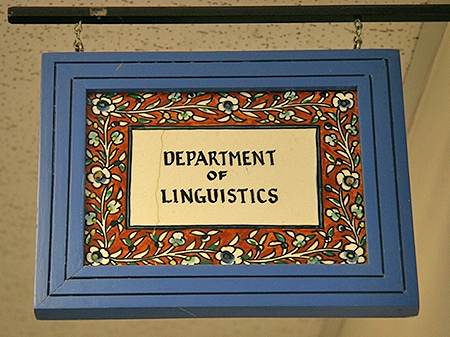
Linguistics ETDs
Publication Date
Spring 2-21-2022
Abstract
Usage-based Phonology proposes that language users’ knowledge is stored in the form of exemplars reflecting experience of language usage. Exemplars encompass all visual and auditory information perceived during a language interaction, but few studies have examined the role that visual information plays. This dissertation addresses this question through two experiments. Experiment 1 tested perceptions of rounding via the visual signal (lip protrusion) in native French speakers. Participants perceived rounding in both visual and auditory signals, suggesting they may store the visual stimulus in their exemplars. Experiment 2 tested native American English speakers learning French on perceptions of rounding using audio or audiovisual training. Audiovisually trained learners performed worse than the audio trained group, suggesting exemplars were not shaped by visual signals. These findings suggest that complex bimodal stimuli may require a high perceptual load and that greater fluency may be necessary before such stimuli influence one’s exemplars.
Language
English
Keywords
French, visual, exemplar, phonology, usage-based, second language
Document Type
Dissertation
Degree Name
Linguistics
Level of Degree
Doctoral
Department Name
Department of Linguistics
First Committee Member (Chair)
Caroline Smith
Second Committee Member
Jill Morford
Third Committee Member
Christian Koops
Fourth Committee Member
Amy Neel
Recommended Citation
Sances, John M.. "Seeing is Believing: The Role of the Visual Stimulus in Cognitive Knowledge of Sound Structure." (2022). https://digitalrepository.unm.edu/ling_etds/76
